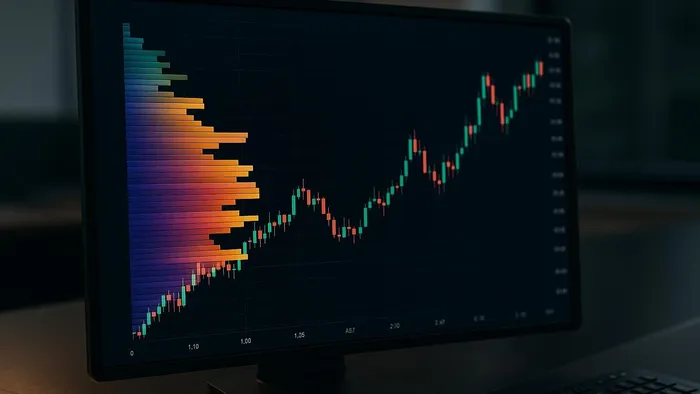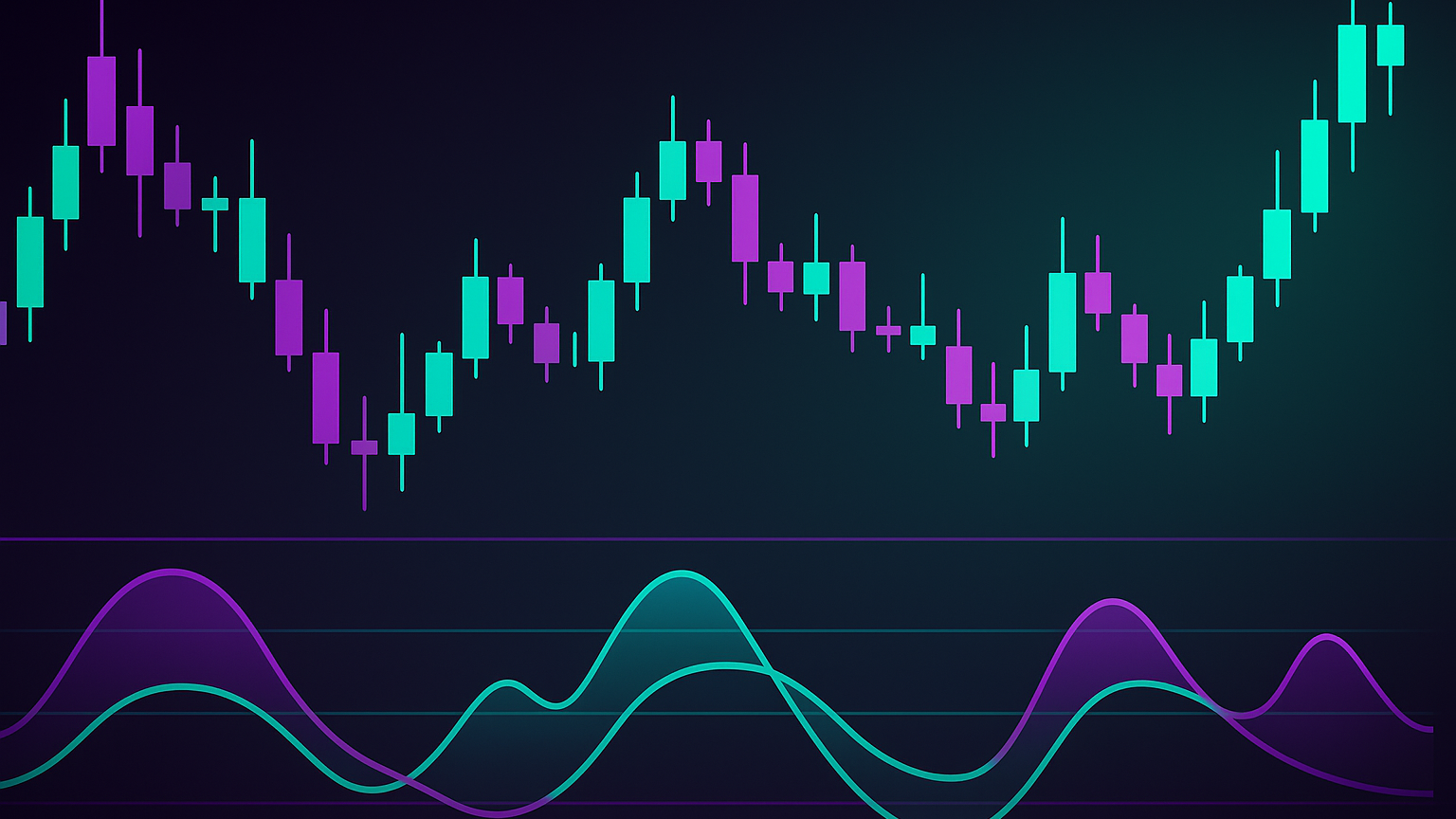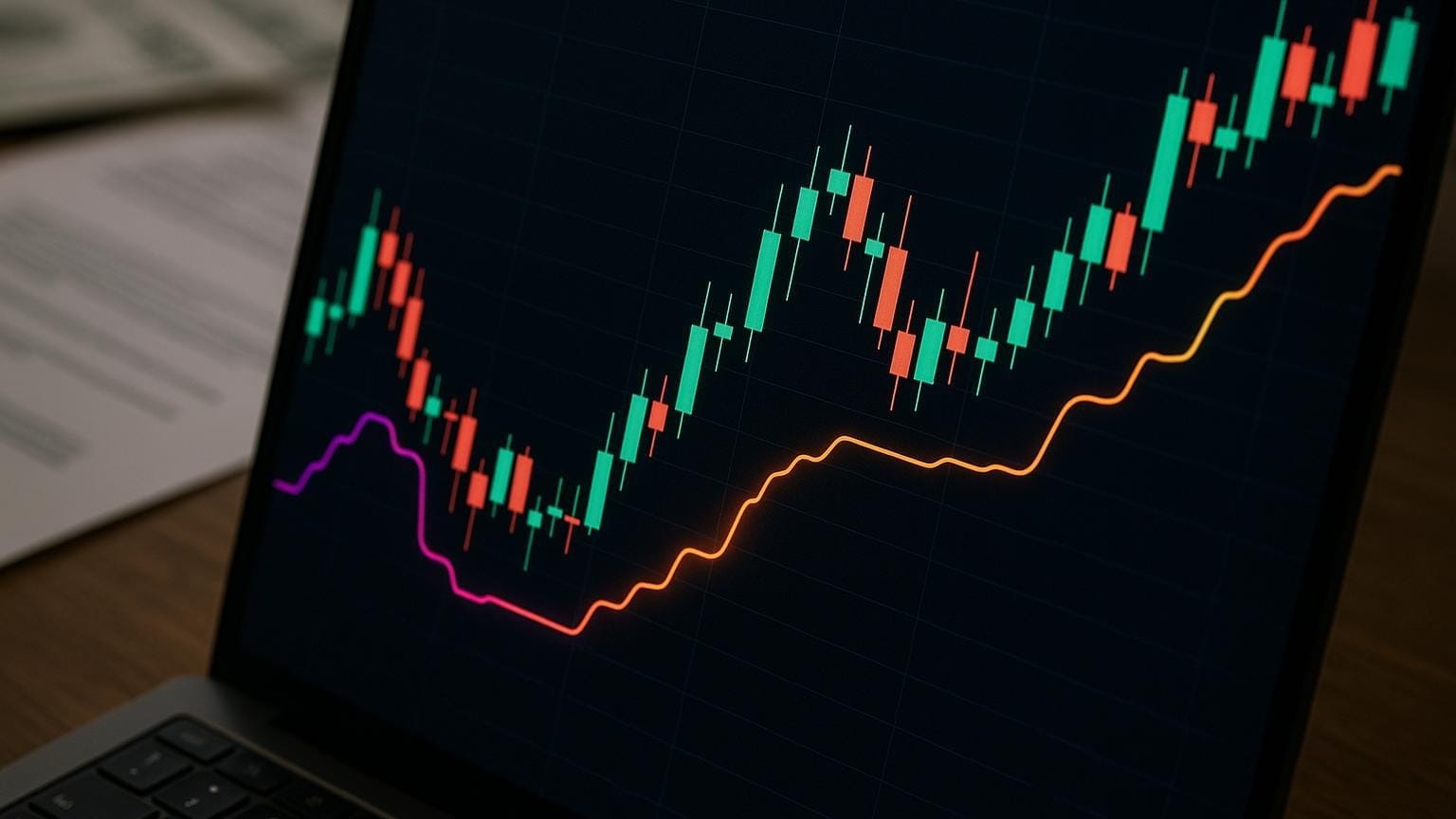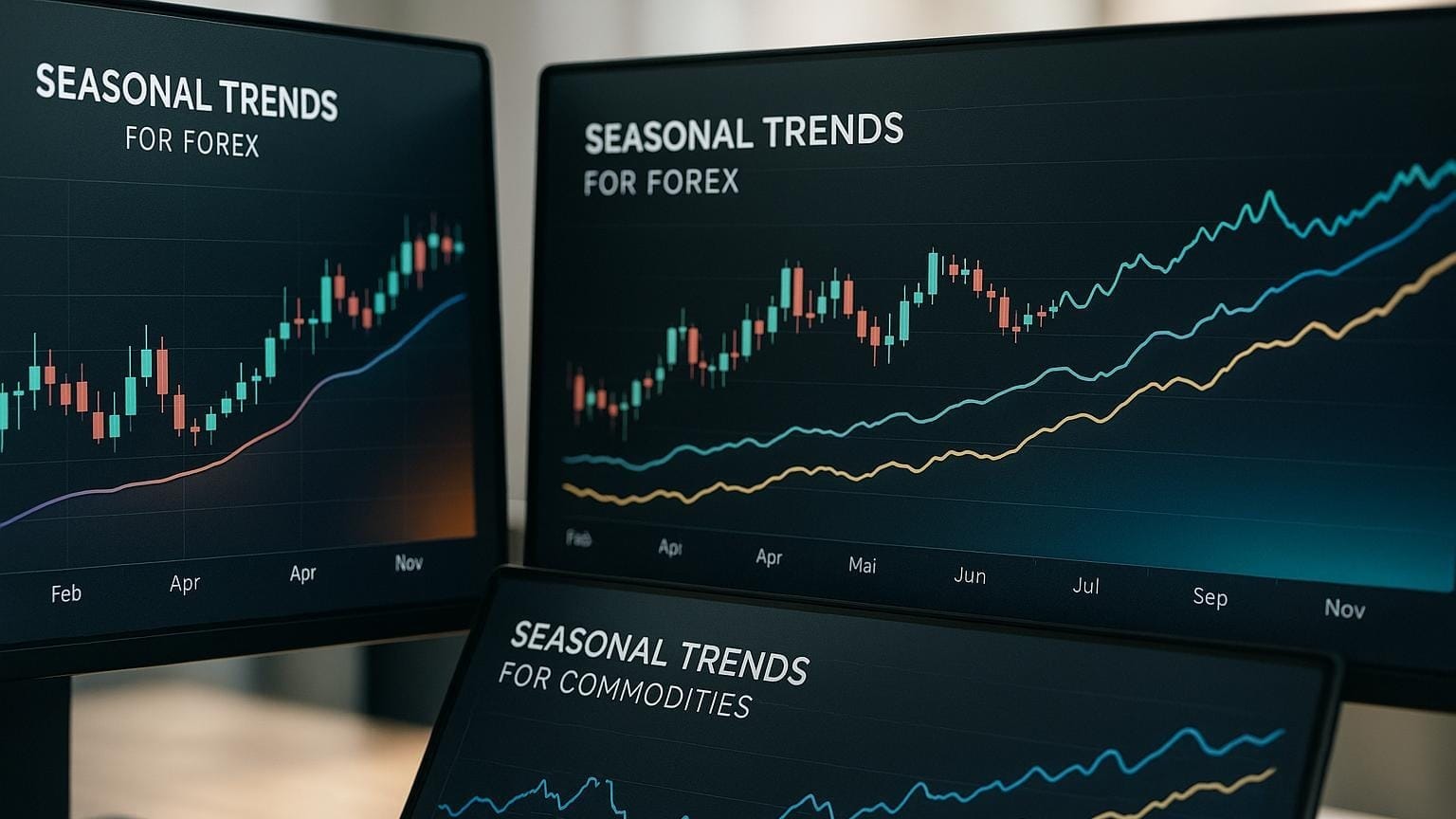Unlock the secrets of Volume Profile analysis to enhance your trading strategy by identifying key zones where institutional traders operate.
Want to trade like the pros? Volume Profile analysis reveals where institutional traders, often called "smart money", focus their activity. By mapping trading volume across price levels, this approach helps you identify key support and resistance zones, smart money patterns, and potential breakout areas. Here's what you need to know:
- Point of Control (POC): The price level with the highest traded volume, acting as a key support or resistance zone.
- Value Area (VA): The price range containing 68 percent of total trading volume, highlighting "fair value" zones.
- High Volume Nodes (HVN): Areas with concentrated trading activity, often signaling reversals or strong support or resistance.
- Low Volume Nodes (LVN): Zones with minimal trading activity, ideal for spotting breakouts or rapid price moves.
Why it matters? Smart money leaves footprints in these volume zones, and understanding them can guide your trade entries, exits, and risk management. Solutions such as LuxAlgo's Volume Profile indicators can make this analysis even easier.
Let’s dive deeper into how this works and how you can use it to improve your trading strategy.
My ULTIMATE Volume Profile Trading Video
Volume Profile Key Elements
The Point of Control (POC) and surrounding volume zones are critical for understanding institutional trading activity. These elements highlight where major players, often referred to as "smart money", focus their efforts, shaping market trends. Let’s dive deeper into the POC, value areas, and profile types to see how they influence trading decisions.
Point of Control Analysis
The Point of Control (POC) represents the price level with the highest trading volume. This is a key indicator of where institutions build large positions, effectively signaling their influence on market sentiment. Here’s how the POC's position relative to the current price can guide traders:
| POC Position | Market Interpretation | Trading Implication |
|---|---|---|
| Above Current Price | Indicates bearish sentiment | Acts as a potential resistance zone |
| Below Current Price | Suggests bullish sentiment | Serves as a potential support zone |
| At Current Price | Signals high interest | Likely to result in consolidation |
Value Areas and Volume Zones
Value Areas represent the price range that accounts for 68 percent of total trading activity, aligning with one standard deviation from the mean. These areas are where institutional traders typically find prices "fair" and concentrate their transactions.
Within Value Areas, two distinct volume patterns emerge:
- High Volume Nodes (HVN)
HVNs highlight price levels with significant institutional interest, often acting as magnets for price action. When price interacts with an HVN, traders can expect:- Strong support or resistance levels
- A higher likelihood of price reversals
- Increased trading activity
- Low Volume Nodes (LVN)
LVNs show areas with minimal trading activity and lower liquidity. These zones often lead to sharp price movements. Traders should watch for:- Potential breakout opportunities
- Rapid price transitions
- Limited institutional involvement
For more details on HVNs and LVNs, refer to the "Volume Profile Basics" section.
Profile Types and Applications
Different Volume Profile types cater to various trading strategies, offering flexibility in market analysis. Here’s a breakdown:
| Profile Type | Key Features | Best Application |
|---|---|---|
| Session Profile | Covers daily, weekly, or monthly data | Ideal for short-term trading decisions |
| Visible Range (VPVR) | Adjusts dynamically to price levels | Useful for real-time market analysis |
| Fixed Range (VPFR) | Focuses on user-defined timeframes | Great for studying historical patterns |
| Candlestick Profile | Maps volume within individual candles | Provides detailed insights into price action |
Unlike traditional volume indicators that track trading activity over time, the Volume Profile aligns volume with specific price levels, offering a clearer view of institutional trading zones. This alignment allows traders to pinpoint key support and resistance levels where major market participants are most active.
Smart Money Detection Methods
Spotting institutional trading activity demands a solid grasp of Volume Profile patterns and their impact. By studying specific volume formations, traders can anticipate smart money movements and fine-tune their strategies.
Volume Cluster Analysis
Volume clusters highlight price levels where trading activity is heavily concentrated. These clusters often reveal the intentions of institutional players:
| Cluster Type | Characteristics | Trading Implications |
|---|---|---|
| Accumulation | High volume with rising price | Signals potential bullish continuation |
| Distribution | High volume with falling price | Indicates possible bearish reversal |
| Consolidation | High volume in a tight range | Suggests range-bound trading behavior |
Key elements to focus on when analyzing clusters include:
- Peak Volume Nodes: Zones that often mark areas of heavy institutional activity. Once resolved, they can lead to significant price moves.
- Highest Volume Nodes: Levels showing where price has been consistently accepted, indicating smart money interest.
- Volume Concentration Spikes: Sudden increases in trading volume at specific price points may signal institutional positioning.
Volume Delta Signals
Volume Delta measures the imbalance between buying and selling activity, helping traders determine whether institutional players are accumulating or distributing positions.
"Volume footprint charts give traders valuable insights into buying or selling pressure at each price level, information not visible on traditional candlestick charts." — Mind Math Money
Key Delta patterns to watch for:
- Strong Positive Delta: Indicates aggressive buying, often pointing to institutional accumulation.
- Persistent Negative Delta: Reflects sustained selling pressure, signaling potential distribution.
- Delta Divergence: Appears when price movement conflicts with Delta direction, hinting at possible smart money manipulation.
Volume Footprint Reading
Volume footprints provide a detailed view of trading activity by breaking down volume at each price level. This perspective helps traders pinpoint institutional moves before they become apparent in price action.
A critical component of footprint analysis is the Value Area, which typically represents about 70 percent of trading activity. When reading volume footprints, consider the following:
- Delta Flow Analysis: Sustained buying or selling imbalances within specific price levels can reveal institutional order flow.
- Breakout Validation: Confirm breakouts by checking for strong Delta activity at key levels.
- Reversal Detection: Divergences between price and volume can indicate smart money positioning ahead of visible reversals.
Volume Profile Trading Methods
Volume Profile techniques translate price and volume interactions into actionable trading strategies.
Value Area Trading Setup
Value Area trading revolves around the Value Area High (VAH) and Value Area Low (VAL) as key pivot levels.
Range-Bound Strategy
- Buy near the VAL when it acts as support.
- Sell or short near the VAH when resistance is evident.
- Place stop-loss orders just outside the Value Area to manage risk.
Breakout Strategy
- Enter long positions on clear breaks above the VAH.
- Take short positions on decisive breaks below the VAL.
- Confirm breakout direction with a surge in volume.
Low volume zones can further refine breakout opportunities, improving accuracy.
Low Volume Breakout Trades
| Breakout Type | Volume Characteristics | Trading Approach |
|---|---|---|
| Strong Break | High volume confirmation | Enter trades with momentum |
| Weak Break | Low volume movement | Avoid or wait for a retest |
| Failed Break | Volume divergence | Consider counter-trend trades |
Always confirm breakouts by watching for volume spikes, a sign of conviction behind the move.
Point of Control Trade Setups
Point of Control (PoC) strategies complement range and breakout methods by leveraging high-volume price levels identified earlier.
PoC Reversal Setup: When price revisits the PoC, look for strong volume rejection, emerging support or resistance, and volume divergence.
For example, in May 2024 Apple (AAPL) revisited a PoC at $186.60, then rallied above $200, illustrating how institutions often position around these levels.
PoC Continuation Setup: Seek price holding above or below the PoC after a strong move, rising volume in the trend direction, and the prior PoC acting as support or resistance.
LuxAlgo Volume Analysis Tools
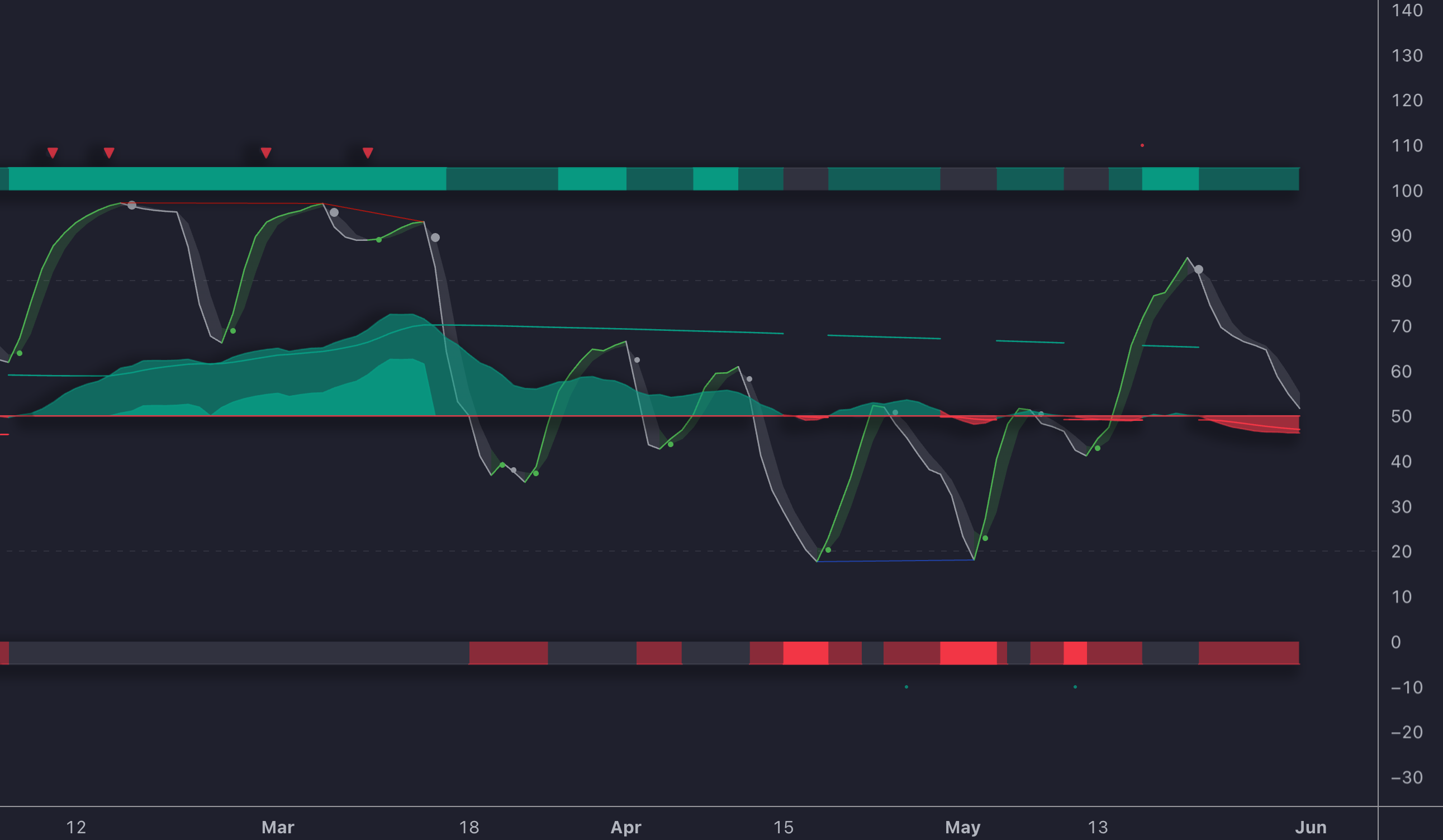
Oscillator Matrix Toolkit
LuxAlgo’s Oscillator Matrix toolkit delivers a money-flow-based view of market momentum. By aggregating multiple oscillators into a single dashboard, it detects divergences automatically and highlights overbought or oversold zones. When combined with Volume Profile nodes, Oscillator Matrix offers an extra confirmation layer, helping traders verify whether buying pressure is flowing into an HVN or fading near an LVN.
- Aggregated money-flow and relative-strength metrics across configurable look-back periods
- Automatic bullish and bearish divergence plotting
- Trend-strength heat-map for rapid sentiment assessment
For a detailed walkthrough of the toolkit, visit the Oscillator Matrix documentation.
LuxAlgo also provides an AI Backtesting platform, allowing rapid prototyping and evaluation of Volume-Profile-based strategies.
Risk Management Guidelines
Managing risk effectively with Volume Profile safeguards capital and maximizes trading opportunities.
Low Volume Risk Factors
- Sudden Price Swings: Quick moves can trigger stop-loss orders before trades develop.
- Low Liquidity: Wider spreads and slippage are more common.
- False Breakouts: Price can pierce an LVN briefly then reverse.
Trend-Based Adjustments
In an uptrend: Value Area often sits near the bottom of the profile, prices may retrace toward the VAH, and stop-loss placement below key HVNs helps manage risk.
In a downtrend: Value Area tends to form near the top, prices often retrace toward the VAL, and stop-loss placement above key LVNs is advisable.
Confirming Trade Signals
- Technical Indicators: Momentum tools and moving averages add context.
- Support and Resistance Levels: HVNs serve as critical zones for stop-loss placement.
- Value Area Analysis: Observe price behaviour around the VAH and VAL.
Conclusion
Volume Profile analysis reveals where large traders focus their activity, offering insights into support, resistance, and market momentum. LuxAlgo enhances this process with tools that identify volume nodes, gauge sentiment, and refine strategies through AI-driven testing methods.
"When traders apply Auction Market Theory and Volume Profiles, market transparency increases significantly."
Greater transparency helps traders understand market dynamics, pinpoint ideal entry and exit points, and improve risk management.
FAQs
How does the Volume Profile help identify where institutional traders are active?
The Volume Profile pinpoints key price levels with the most trading activity. These levels, known as high-volume nodes, often reveal where institutional traders place large orders. Studying these zones highlights areas that may act as support, resistance, or potential reversal points. The Point of Control (POC), the price level with the highest trading volume, is especially helpful for gauging market interest and timing trades.
What do High Volume Nodes (HVNs) and Low Volume Nodes (LVNs) reveal about market trends?
HVNs mark price levels with intense trading activity, often serving as strong support or resistance zones and hinting at institutional involvement. LVNs indicate price levels with little activity, areas where prices can move quickly, creating breakout or rapid-shift opportunities. Analyzing both helps traders understand market structure and plan entries or exits.
How can I use the Point of Control (POC) to improve my trading decisions?
The POC is the price level with the highest trading volume during a chosen period. Watch how price reacts to the POC. Bounces suggest strong support or resistance, breaks can signal shifts in sentiment. Combine the POC with Volume Profile patterns or technical indicators to confirm trends and improve trade timing.
References
- Market Structure Volume Distribution Indicator
- Volume Profile Maps Indicator
- Dynamic Support and Resistance Indicator
- Smart Money Flow Documentation
- LuxAlgo Homepage
- Market Sentiment Technicals Indicator
- Fetching Strategies Documentation
- Candlestick Structure Indicator
- Candle-Body Support and Resistance Indicator
- Correlation Clusters Indicator
- Volume Delta Candles Indicator
- Support and Resistance Signals (MTF)
- AI Backtesting Platform
- Oscillator Matrix Toolkit Documentation
- Oscillator Matrix Indicator
- Ultimate Volume Profile Trading Video


